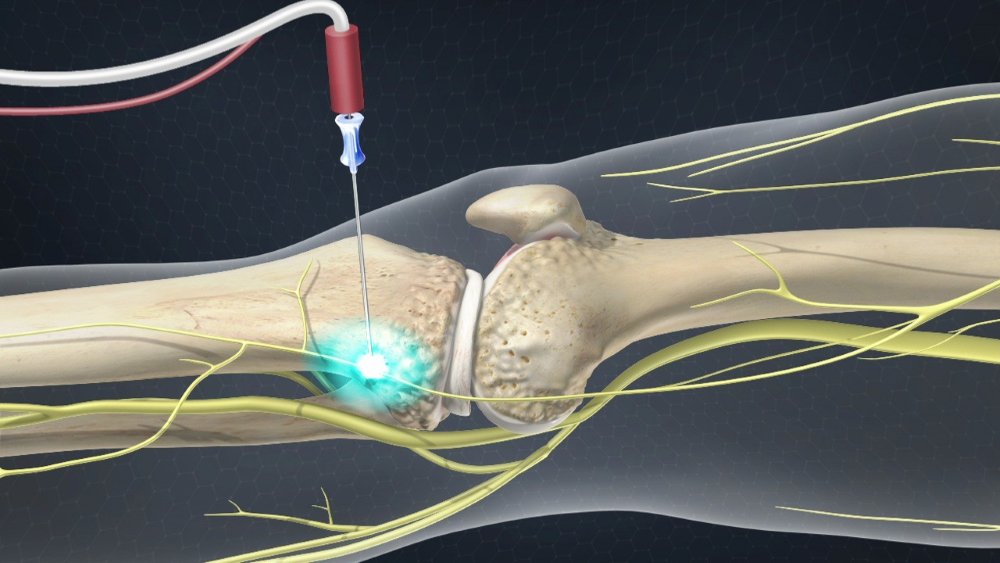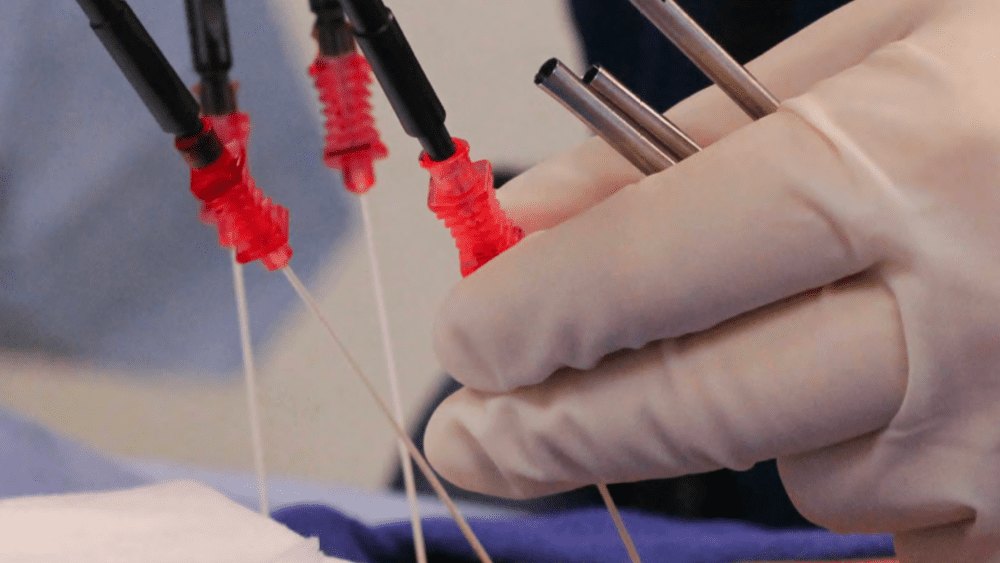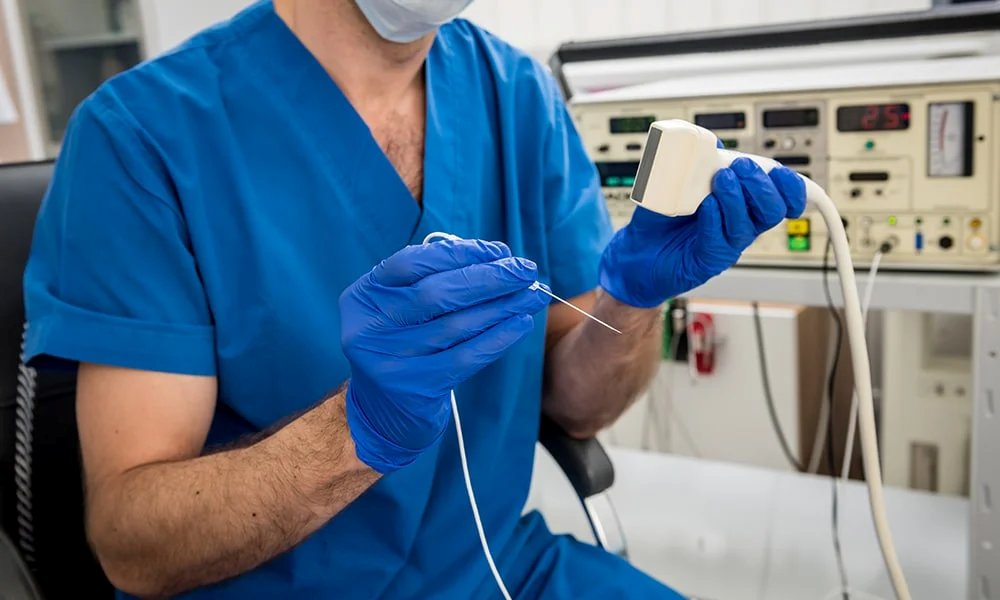What is Radiofrequency Ablation (RFA) and What Is It Used For?
Radiofrequency Ablation (RFA) is an advanced, minimally invasive medical procedure designed specifically for effective management of chronic pain. But exactly, what is (RFA) and what is it used for?
RFA uses carefully directed radiofrequency energy to heat and deactivate specific nerves that transmit pain messages to the brain. By precisely targeting these nerves, RFA significantly reduces or completely eliminates pain, improving the overall quality of life for patients.
Conditions effectively managed by RFA include chronic back pain, neck pain, arthritis, neuropathic pain, facet joint disorders, and certain neurological conditions such as trigeminal neuralgia and occipital neuralgia. Patients who have not found adequate relief through medications, physical therapy, or injections typically find substantial relief through this procedure, highlighting its importance as an integral component of orthopedic care throughout Texas.
Understanding what is (RFA) and what is it used for helps patients explore effective, non-surgical pain relief options. In recent years, RFA has become increasingly popular because of its minimally invasive nature, high effectiveness, and significantly lower risks compared to more invasive surgical interventions.
How Does Radiofrequency Ablation Work?
In an RFA procedure, the physician employs imaging tools like fluoroscopy or ultrasound to accurately identify and target the specific nerves involved. Once accurately located, a thin needle-like electrode is inserted through the skin directly into the target nerve area. A small electrical current generated by radio waves is passed through the electrode, heating the nerve tissue to a temperature that disrupts its ability to send pain signals. This controlled destruction of nerve fibers provides prolonged pain relief without significantly impacting surrounding tissues.
Is RFA Considered Surgery?
When patients ask, what is (RFA) and what is it used for? they frequently inquire whether it qualifies as surgery. While RFA does involve medical intervention, it is classified as minimally invasive, clearly differentiating it from traditional surgical procedures. Traditional surgeries typically involve large incisions, significant tissue disruption, and prolonged hospital stays. Conversely, RFA requires only a thin needle-like electrode inserted through the skin, guided by advanced imaging techniques such as fluoroscopy or ultrasound.
Due to this minimally invasive nature, RFA significantly reduces the risks typically associated with surgery, such as infections, bleeding, and extended hospital stays. Consequently, patients typically experience fewer complications, less postoperative pain, and a shorter recovery period.
Is RFA Painful?
Concerns about pain during the procedure are common among patients asking what is (RFA) and what is it used for?. Fortunately, local anesthetics are administered before the procedure to numb the treatment area effectively, minimizing discomfort significantly. Patients usually report sensations of mild pressure, warmth, or slight tingling during the treatment.
Post-procedure discomfort is generally mild and easily managed with over-the-counter pain relievers such as acetaminophen or ibuprofen. Any residual soreness or tenderness typically resolves within a few days, making RFA an appealing option for comfortable yet effective pain relief, particularly beneficial for individuals seeking pain relief and management in Dallas.
Radiofrequency Ablation (RFA) Procedure Duration
Patients often wonder about the length of the RFA procedure when considering what is (RFA) and what is it used for?. Typically, an RFA session can take anywhere from 20 to 45 minutes, depending on the number of nerves involved and the specific details of the patient’s condition. Including patient preparation and brief post-treatment monitoring, the entire procedure usually takes around one to two hours. This short duration makes RFA both efficient and practical for patients seeking prompt pain relief without prolonged medical visits or hospitalizations.
Radiofrequency Ablation (RFA) Recovery Time
A significant advantage discussed when exploring what is (RFA) and what is it used for? is the recovery period. Unlike traditional surgeries that require extensive recovery times, patients undergoing RFA typically resume regular activities within 24 to 48 hours post-procedure.
Minor side effects such as swelling, bruising, or tenderness at the insertion site usually resolve quickly. Physicians typically recommend avoiding strenuous activities or heavy lifting for a few days post-treatment to ensure optimal healing. The rapid recovery makes RFA highly appealing, allowing patients to return swiftly to their daily routines with minimal interruption.
Advantages and Disadvantages of RFA
To make an informed choice, it’s important to weigh both the benefits and possible limitations of RFA treatment.
Advantages of RFA:
- Minimally invasive with significantly fewer risks.
- Quick recovery period, enabling patients to return to their usual activities within just a few days.
- Durable pain relief, typically lasting from several months to two years.
- Reduced reliance or complete elimination of pain medication use.
- Exceptional accuracy in identifying and treating pain sources through the use of advanced imaging technologies.
- Increased patient satisfaction due to rapid and substantial improvements in quality of life.
- Lower medical costs compared to traditional surgery, with shorter hospital stays.
- Safe repetition of the procedure if needed.
Disadvantages of RFA:
- Pain relief duration varies by patient, potentially requiring repeated treatments.
- Temporary discomfort or mild soreness post-procedure.
- Not universally effective for all chronic pain types.
- Requires highly skilled healthcare providers to achieve optimal outcomes.
- Possible temporary sensory or minor motor changes.
- Not recommended for patients with severe bleeding disorders or active infections.
- Potential psychological impacts, such as anxiety or fear of procedure-related pain, especially for patients with previous negative medical experiences.
- Certain underlying health conditions may limit patient eligibility or affect the effectiveness of the treatment, requiring careful patient selection and individualized medical assessment.
Radiofrequency Ablation Side Effects
Patients considering Radiofrequency Ablation frequently inquire about potential side effects. Generally, side effects are minor, temporary, and easily manageable. Common side effects include:
- Mild soreness, bruising, or swelling at the treatment site.
- Temporary numbness or tingling sensations near the treated area.
- Brief swelling or redness around the insertion site.
- Rare occurrences of temporary weakness or sensory disturbances.
To manage these side effects, healthcare providers typically recommend applying ice packs to reduce swelling and discomfort at the treatment site immediately after the procedure.
Non-prescription pain relievers like acetaminophen or ibuprofen are typically effective in sufficient to control any residual pain or soreness. Patients are advised to rest for the first day or two following the procedure and avoid strenuous activities to minimize discomfort and enhance recovery.
Proper hydration and gentle movement, such as walking, can also promote healing and reduce stiffness. These side effects typically resolve within days to a week, with severe complications being exceedingly rare when performed by skilled professionals.
Radiofrequency Ablation (RFA) with GTOA
Greater Texas Orthopedic Associates (GTOA) is a leading provider of comprehensive orthopedic and pain management services, including advanced RFA treatment in Texas. With convenient locations across Arlington, Houston, San Antonio, Dallas, Corpus Christi, and Beaumont, GTOA offers expert care tailored to the needs of each community.
At GTOA, patients benefit from:
- Advanced, less-invasive solutions for pain relief, including radiofrequency ablation (RFA) and a variety of therapeutic injections
- Comprehensive orthopedic evaluations and treatment for traumatic injuries and chronic musculoskeletal conditions
- Specialized care for spine, joint, and nerve disorders
- Personalized rehabilitation plans, including support for legal and personal injury cases
- If you or a loved one is seeking professional, compassionate, and innovative care, GTOA stands ready to help, bringing excellence in pain relief and orthopedic care to patients throughout Texas.
A Note from Greater Texas Orthopedic Associates
Radiofrequency ablation (RFA) applies carefully controlled heat to specifically target and interrupt nerves that carry pain signals. Primarily considered for chronic spine-related pain after traditional methods like medication and physical therapy have proven ineffective, RFA provides substantial relief for many individuals. If chronic pain significantly impacts your quality of life, consult your healthcare provider to determine if RFA is an appropriate treatment option for you.
References
1. American Society of Anesthesiologists (ASA). Radiofrequency Ablation for Pain Management. Retrieved from asahq.org
2. Mayo Clinic. Radiofrequency Neurotomy. Retrieved from mayoclinic.org
3. Johns Hopkins Medicine. Radiofrequency Ablation. Retrieved from hopkinsmedicine.org
4. Cleveland Clinic. Radiofrequency Ablation for Pain. Retrieved from my.clevelandclinic.org
5. WebMD. Radiofrequency Ablation (RFA). Retrieved from webmd.com





